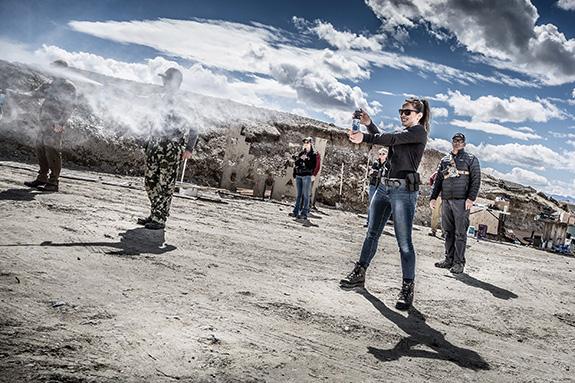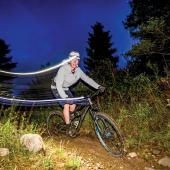Battling the Bruin
Guns vs. bear spray.
One of the most perilous hazards of hiking or hunting in western Montana is finding yourself between a grizzly bear and her cubs. In this worst-case scenario, you must think and act fast. Preparation and awareness are key to safety when planning an outing in bear country. Carrying effective deterrents, both lethal and non-lethal, is essential.
First consider non-lethal defense, such as bear spray. While it can be an effective option, it has a limited range of about 10 yards, it’s susceptible to wind and extreme temperatures, and one must be alert to the expiration date on the canister.
Marine flares are another non-lethal deterrent and offer both visual and auditory defense. The flares are blindingly bright, produce a loud, unnatural sound, and generate heat and smoke. However, like bear spray, flares must be used in close proximity to scare the grizzly off.
The lethal weapon, a firearm, allows one to respond at a greater distance from the bear. The drawback is that a firearm requires training before it can be used safely and effectively. Pistol choices abound, but a popular choice is the Glock 20 in 10mm with a magazine capacity of 15 rounds. The 10mm round is the perfect combination of mass and speed with the velocity to punch through a grizzly hide, rupture vitals, and end the threat.
Be aware that a grizzly can charge at 40mph—time is never on your side and so any weapon must be readily accessible. Practice often, with each individual weapon and various mock scenarios. Be ready to deploy different deterrents in different situations, or switch from one to another quickly.
Also be aware that you should only use a weapon when necessary. Unless the bear is charging you, the best action is to slowly back up, never making eye contact. Keep the spray, flare, or pistol in your hand, ready to fire when the moment calls for it. Good luck and stay safe out there.
Joe Dwyer works for Tactic, a shooting, self-defense, and security company based in Bozeman.












